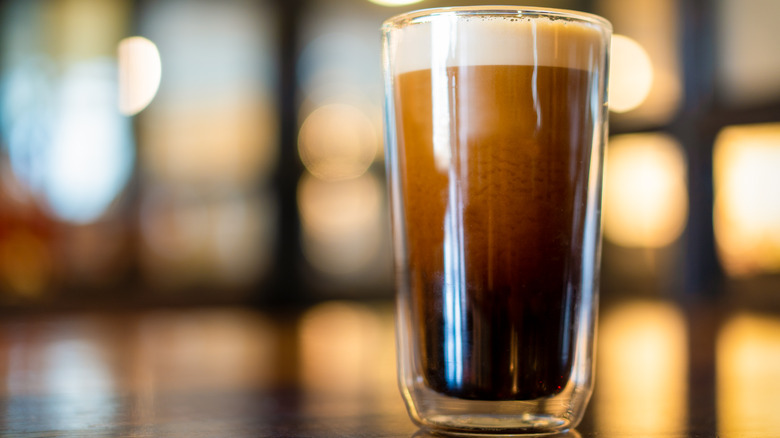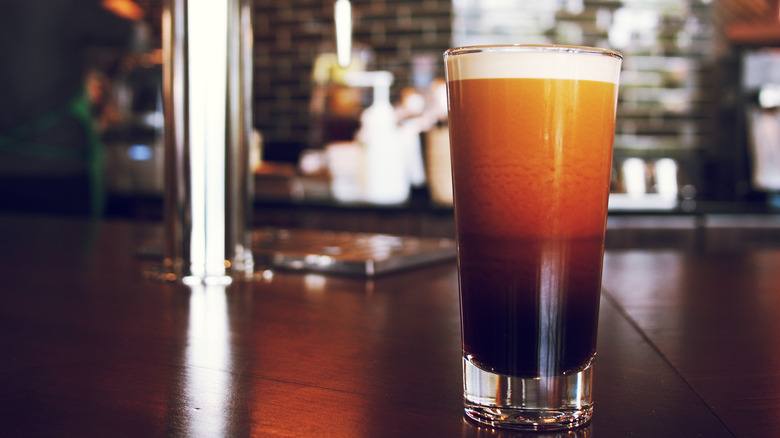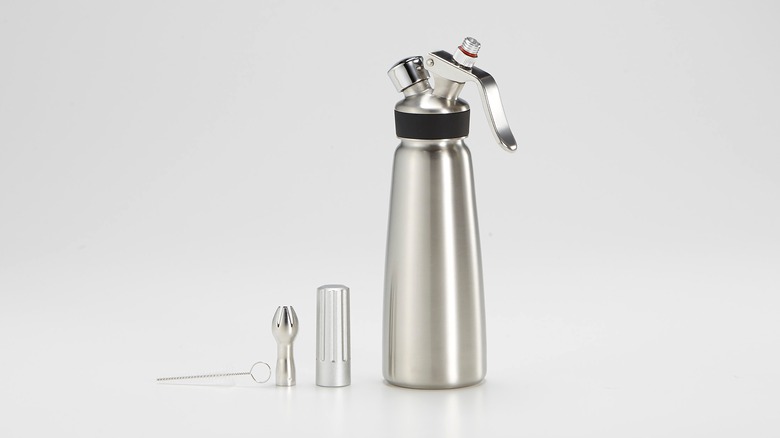Nitro Cold Brew Coffee: What Exactly Is It?
No longer a specialty coffee found only at hip coffee shops, even Starbucks and Dunkin have jumped on board the nitro cold brew coffee train. But what is it, and what does it taste like?
Nitro cold brew coffee is cold-brewed coffee that has been carbonated with nitrogen gas. The nitrogen gives the coffee a thick, silky mouthfeel, and the cold brew process results in a smooth coffee with lower acidity and bitterness than coffee brewed with hot water. Together, they create a coffee that can only be described as velvety. It's super smooth.
As a result, nitro cold brew has a layer of foam floating on top, reminiscent of the head on a stout or the crema on an espresso, and a creamy texture in the body without any additional ingredients. For those who like their coffee black but want something decadent, this is the answer. You can, of course, add whatever creamer and sweetener you'd like, but keep in mind that like soda or beer, too much agitation will make it go flat.
Did you say carbonated coffee?
Yes — carbonated coffee. But that doesn't mean your coffee is going to tickle your nose like soda or an IPA; those beverages are carbonated with carbon dioxide. Nitrogen carbonation creates microbubbles that create an entirely different experience than CO2 bubbles.
Perhaps the beverage most well-known as being carbonated with nitrogen is Guinness. If you've ever had a Guinness stout pulled properly from the tap, you'll recognize the signature "waterfall" effect of the nitrogen right away in your freshly pulled nitro cold brew coffee. This is created when the microbubbles of nitrogen push their way up through the beverage and make their way back out to the atmosphere. It looks like sheets of water are falling inside the glass (they kind of are), like a waterfall or heavy rain falling down window panes. It's a little moment of meditation and beauty with your morning coffee.
Other than having a beautiful effect and creating the luscious mouthfeel nitro cold brew is known for, nitrogenating has another benefit: prolonged freshness. Just like how wine starts to oxidize and "go bad" when the bottle sits open and is exposed to oxygen over time, coffee will oxidize and lose its flavor. American University chemistry professor Matt Hartings told WBUR, "When you bubble nitrogen through, you get rid of any oxygen that's in your coffee. And so you preserve all these flavors that might not be there otherwise."
Can you make it at home?
Although you can now buy nitro cold brew at many coffee establishments or even canned in certain grocery stores, with special equipment you can make nitro cold brew at home. It starts, of course, with the coffee; first you have to make a great cold brew.
If you're a home brewer and have a kegerator system, it's as easy as using a nitrogen gas tank instead of a carbon dioxide gas tank to carbonate. Fill up a keg with cold brew, hook up the line at 40 PSI, and pour with a stout tap for nitro coffee on demand at the pull of a handle.
For those of us who aren't blessed with an at-home tap system, there's another way to hack nitro cold brew at home: A nitrogen culinary whipper. One of the professional gadgets you can use in your own kitchen, a culinary whipper or cream whipper isn't just for making whipped cream and fancy foams. It can also nitrogenate your coffee! With two charges of nitrogen and a quick 30-second shake, you're ready to pour your nitro cold brew into a glass.


